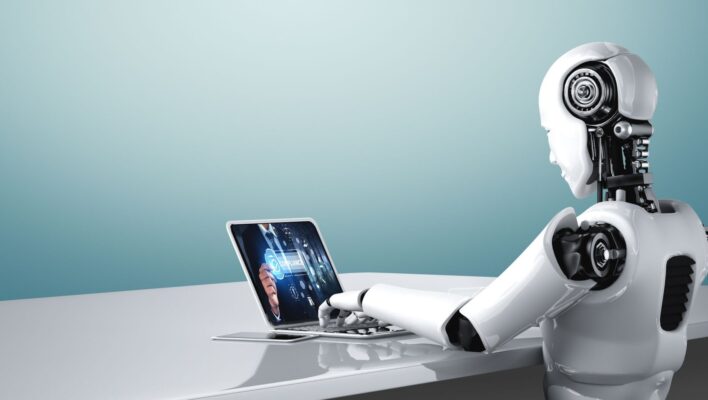Key takeaways
- Workslop describes “AI-generated work content that masquerades as good work, but lacks the substance to meaningfully advance a given task,” according to a Harvard Business Review study.
- 40% of working professionals have received some kind of workslop in the last month.
- The best ways to avoid workslop is to encourage collaboration and establish best practices, so your team knows how to use the technology right.
A new trend in the world of AI could help explain why the majority of businesses that use the technology aren’t seeing a return on investment: workslop.
Workslop is defined as AI-generated work that is passable for getting the job done technically, but eventually creates more work for coworkers and managers that need to improve or correct it to be sufficient.
In this guide, we’ll explain what workslop is, how common it’s becoming, how it impacts productivity, and how to avoid and spot it at your business.
What Is Workslop?
According to a study from BetterUp Labs, workslop is defined as “AI generated work content that masquerades as good work, but lacks the substance to meaningfully advance a given task.”
Basically, AI tools have been rolled out and sometimes even required at businesses around the world at break-neck speeds. Professionals and managers alike have been mandated to take advantage of these tools, with hopes of improving productivity and streamlining operations.
 This just in! View
This just in! View
the top business tech deals for 2025 👨💻
However, given the technology’s inclination towards errors and hallucinations, a lot of the work created doesn’t pass muster, leading to managers and coworkers to pick up the slack and spend additional time fixing the problem.
How Common Is Workslop?
The report has so far surveyed 1,150 full-time employee based in the US and found that workslop is becoming more and more prevalent across the professional landscape.
According to the survey, 40% of respondents say that they have received workslop in some capacity in the last month. On top of that, respondents that have seen workslop on the job note that it comprises about 15% of the content they receive from other professionals.
As for where workslop is most common, coworkers (40%) are generally the ones that are taking the brunt, but they aren’t alone. 18% of managers say that they have received workslop from their employees, while 16% of workers say that they have received workslop from their managers.
How Does Work Slop Impact Productivity?
As you can probably imagine, workslop isn’t exactly improving productivity at businesses in 2025. Still, how bad exactly is it impeding productivity? Well, according to the study, it’s pretty bad.
“Each incidence of workslop carries real costs for companies.” – Harvard Business Review
Respondents to the survey stated that they generally spent one hour and 56 minutes on improving each instance of workslop. Given the estimated salaries providing in the survey, this amounts to about $186 per month per instance. With 40% of professionals saying they’ve received it in the last month, that could be massive drain on your businesses productivity and financial security.
Workslop is having a negative impact on company morale as well, which could obviously affect productivity. 53% of professionals who received workslop at their jobs said they felt annoyed as a result, with respondents also noting that they felt confused (38%) and annoyed (22%). Additionally, 42% said that they view the offending coworker as less trustworthy, with another 37% saying they believe them to be less intelligent.
How to Spot Workslop
The reality of workslop is that it’s quite hard to spot, which is why it’s becoming so prevalent. Especially in the early stages of a project, AI-generated content checks a lot of rudimentary boxes that make it seem like the job is done. Unfortunately, as you work through it, you realize that is very much not the case, leading to a substantial lapse in productivity.
Just because it’s hard to spot, though, doesn’t mean it’s impossible. Here are some subtle indicators of AI-generated workslop that you can use to nip it in the bud at your business:
- Generic, repetitive wording
- Excessive use of keywords
- Vague, unhelpful information
- Incorrect or hallucinated data
- Visual inconsistencies
- Garbled text
- Robotic or unsynchronized audio
When it comes to spotting AI-generated content in the wild, sometimes you just have to trust your gut. A lot of AI-generated text, images, and videos are still far from perfect, and in many cases, the average person gets an uneasy feeling when seeing it. Trust that feeling and you’ll be right more often than you think.
How to Avoid Workslop
Given the popularity of AI tools like ChatGPT and Gemini and their prevalence at businesses around the world, it’s safe to say that avoiding workslop is not going to be easy. You’ll need to take concrete steps to actually develop a company culture that shirks this kind of AI usage. Here are some things you can do to avoid workslop at your business:
- Establish clear guidelines – Indiscriminately encouraging AI use is a good way to solicit workslop. After all, if you aren’t establishing clear guidelines for how to use the technology, you’re essentially opening the door for employees to use it however they want, including to shirk their responsibilities.
- Have the right mindset – In an ideal scenario, AI is being used to enhance an employee’s creativity, rather than replace it. Encouraging your team to have that mindset going into it can stop the workslop before it even develops.
- Encourage collaboration – AI shouldn’t be doing the work for your employees, but instead act as a collaboration tool that can help bounce ideas off coworkers and AI models alike.
All in all, workslop is the result of poor planning and rushed policies when it comes to AI. If you want AI to actually improve your business, you need to take a measured and calculated approach, otherwise you’re going to be stuck correcting workslop for the foreseeable future.




